Sleeper trains in Europe: new routes, cuts, and how to book beds
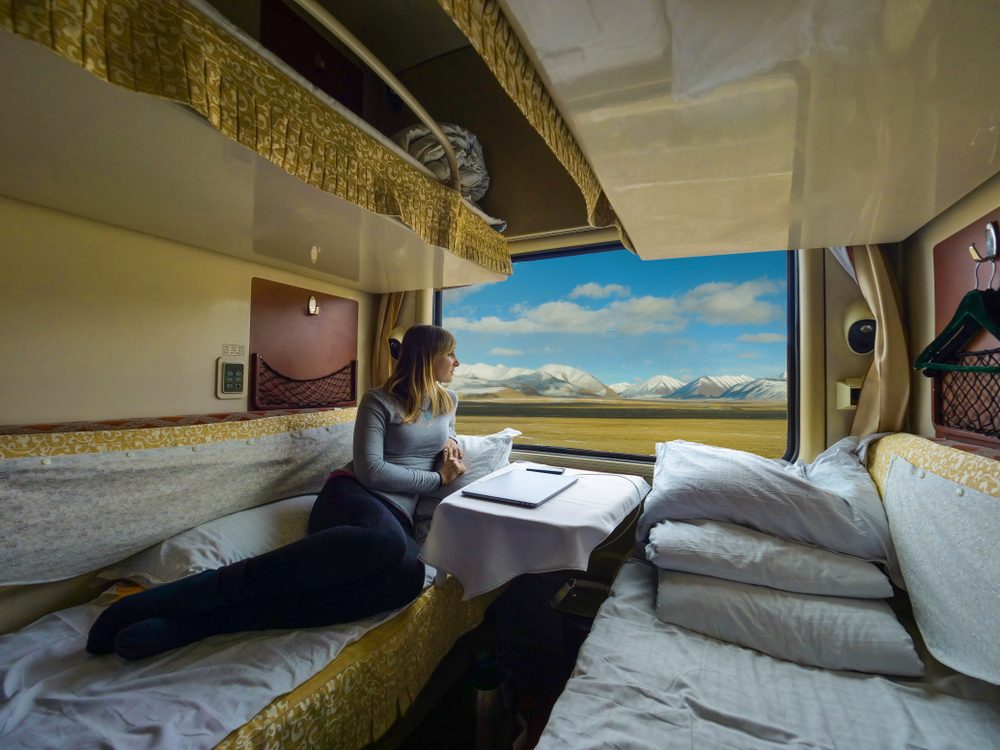
Ever wished you could fall asleep in one city and wake up in another—with an actual bed, fresh coffee, and no airport dash? That’s the quiet magic of Europe’s night trains: you save time, skip a hotel night, and shrink your footprint while you sleep.
I’ve been tracking the comeback of sleepers across Europe for years, and this season is the most exciting (and confusing) yet. New routes are launching, some are being paused, and getting a real bed can still be trickier than it should be. Think shiny new ÖBB Nightjet trains rolling out on flagship routes, European Sleeper stretching to Prague, and Scandinavia bringing back overnight links—while older networks (remember Spain’s Trenhotel?) have mostly faded. It’s a lot.
There’s also a real climate upside. Rail often emits a fraction of the CO₂ per passenger-kilometer compared with short-haul flights—around 14 g vs 150+ g on average in Europe, according to the European Environment Agency. If you’re trying to reduce your travel emissions without sacrificing comfort, a sleeper is one of the easiest wins you can make.
Fall asleep in Paris. Wake up in Vienna. Keep your footprint light and your morning simple.
The snags travelers hit right now
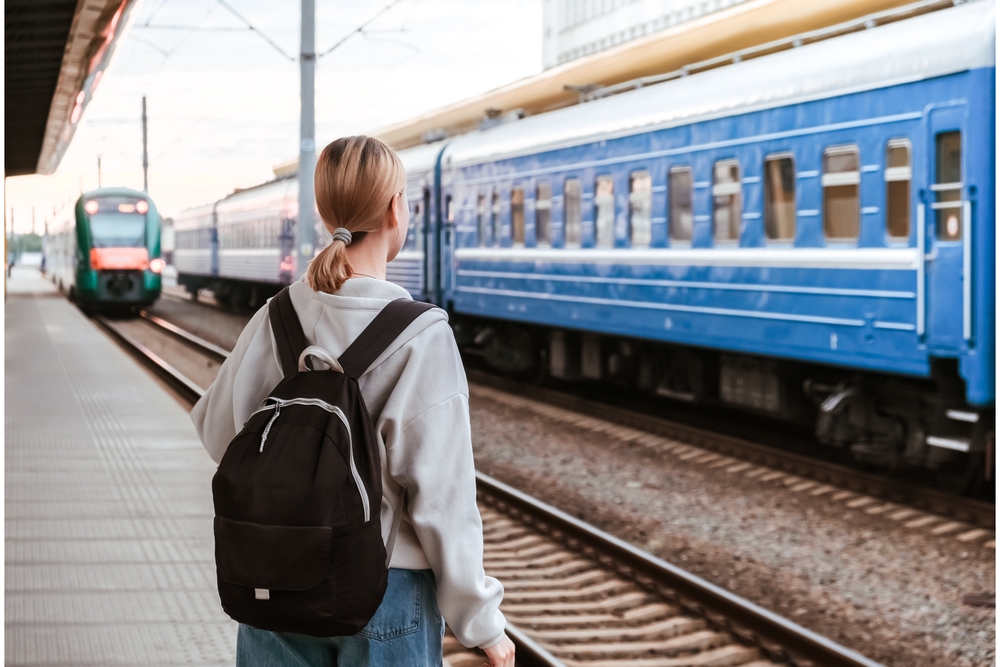
Night trains are back, but the landscape keeps shifting. Here’s what trips people up the most:
- Route churn: Some services run year-round, others only on weekends or summer. One year a route is hot (hello, Stockholm–Berlin), the next it’s retimed or paused. Finding a consistent calendar can be tough.
- Confusing “beds”: A “bed” can mean a simple reclining seat, a shared couchette (4–6 bunks), a private sleeper (1–3 beds), or even an en‑suite on select routes. Different sites label them differently.
- Booking blind spots: Operator sites often show real inventory first; third‑party apps sometimes display “seat only” or miss sleeper categories altogether. This is common on Nightjet and seasonal services.
- Passholder pitfalls: Eurail/Interrail users need reservations (and pay supplements) for couchettes or sleepers. Quotas can sell out even when cash tickets are available, which confuses a lot of people.
- Sold‑out lower bunks: Lower berths go first. If you have mobility needs—or just prefer not to climb—waiting too long can leave you with the top bunk only.
- Fine print: Dynamic pricing, non‑refundable sleeper fares, and odd refund rules can surprise you at checkout if you’re used to flexible daytime tickets.
Real example: I still see travelers search Brussels–Berlin on an aggregator and only find seats, assume “no beds exist,” and book a flight. Then we check the operator and—surprise—couchettes and sleepers are wide open. The information gap is the problem, not the beds.
How I’ll make this easy
You want a real bed, the right cabin, and a smooth booking. I’ll show you what’s new (and what’s paused), where to check first for real availability, and how to lock the exact berth you want—whether you’re paying cash or using a Eurail/Interrail pass. No guesswork, no seat‑only surprises.
We’ll look at which operators to trust for inventory, when an aggregator helps, and how to read those category names so you always end up with a proper bed, not a reclining chair at 2 a.m.
What you’ll get in this guide
- Straight answers: Yes, European night trains have beds—and you can book them in shared or private cabins.
- What’s new vs paused: A quick tour of the most interesting routes returning and the ones taking a break, so you don’t plan around a ghost train.
- Booking links that work: Operator sites that show real berths first, plus smart ways to use Trainline, Rail Europe, and Omio when they actually help.
- Step‑by‑step booking tips: Pick the right category, secure a lower bunk, reserve women‑only if you want, and avoid checkout gotchas.
- Passholder clarity: How supplements, quotas, and the app’s overnight rules really work so you don’t burn an extra travel day.
- Comfort expectations: What’s typically included—linen, breakfast options, power sockets, luggage space—and how secure it feels onboard.
Ready to sort out what actually counts as a “sleeper train” and what you get for your money—seat, couchette, private cabin, even en‑suite? That’s exactly what’s coming next.
What counts as a “sleeper train” in Europe (and what you actually get)
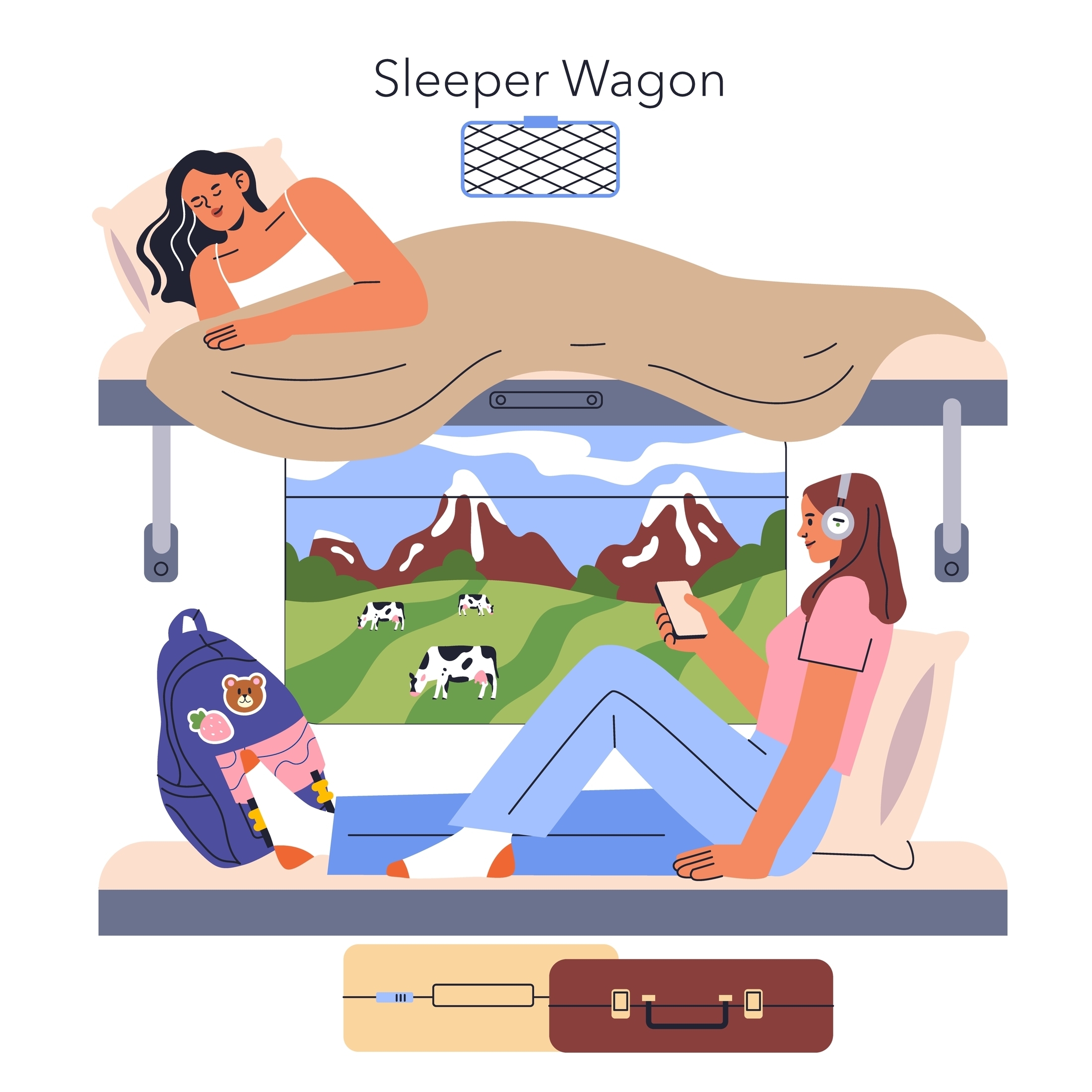
If you’ve only ever pictured a reclined seat and a cricked neck, good news: a European “sleeper train” is a whole spectrum—from simple bunks to private rooms with a door you can lock and, on some routes, your own shower. The trick is knowing the vocabulary and picking the exact category you want at booking. Get that right and you really will fall asleep to the rhythm of the rails and wake up to coffee and a new city.
“The best night on a train is when you forget you’re on a train.”
Seats vs couchettes vs sleepers: what the terms mean and what’s included (bedding, privacy, showers)
When you search for an overnight train, you’ll usually see three categories. They’re not just prices—they’re completely different experiences:
- Seat (2nd class or “recliner”): The cheapest option, but it’s a seat—not a bed. Think airplane-style or a six-seat compartment. You get overhead racks, a reading light, and sometimes a footrest. No bedding. Privacy is minimal. Fine for tough cookies and short hops; most folks regret it on longer runs.
- Couchette (4- or 6-berth bunks): The sweet spot for value. It’s a simple bunk in a shared compartment with a door that locks from the inside. You’ll get a sheet, blanket, pillow, and a fresh pillowcase. On many routes, a light breakfast is included or can be added. Showers are rare; toilets and washbasins are at the end of the car. Women-only compartments are often available—look for “Ladies” or “Women-only couchette.”
- Sleeper (1-, 2-, or 3-bed room): A proper cabin with real mattresses, thicker bedding, towels, and significantly more privacy. Classic sleeper rooms share toilets and a small washroom at the end of the car; some trains offer en‑suite WC and shower in select cabin types (for example, the newest ÖBB Nightjet stock and the UK’s Caledonian Sleeper Club rooms). Breakfast is usually included, often with tea/coffee served in your cabin.
Real-world examples:
- ÖBB Nightjet (Austria/Germany/Italy/Netherlands/France): Seats, 6-/4-berth couchettes, and sleepers including new-generation cabins with en‑suite in some categories.
- European Sleeper (Brussels–Amsterdam–Berlin–Prague): Seats, couchettes, and classic sleepers; no en‑suite—shared facilities on the car.
- SJ EuroNight (Stockholm–Hamburg/Berlin): Couchettes and sleepers with shared facilities; breakfast options vary by cabin type.
- Trenitalia Intercity Notte (Italy): Seats, couchettes, and sleepers; shared toilets/washrooms, no en‑suite on most routes.
Yes—European night trains absolutely have beds. You can go basic (a bunk in a 6-berth), comfier (a 4-berth), or book a private sleeper for one, two, or three people. On newer rolling stock like Nightjet’s latest, select sleeper categories come with an en‑suite WC and shower; older or refurbished cars typically offer a washbasin in the room and shared facilities down the corridor.
If you’re dreaming of hotel-like privacy, look for phrases like “private sleeper,” “single/double sleeper,” “Deluxe,” or an icon that shows a shower/WC. If you’re happy to share and save, anything labeled “couchette” will give you a real lie-flat bunk with bedding—no guesswork needed.
Do you get a bed on the sleeper train? Only if you book the right category; a reservation guarantees a seat or a bed depending on what you choose
This is where people get tripped up. A “reservation” just means you’re guaranteed the thing you selected—seat, couchette, or sleeper. Pick a seat and you’ll get a seat. Pick a couchette or sleeper and you’ll get a bed. Simple, but easy to miss on aggregator sites that default to “cheapest.”
How I avoid mistakes:
- On operator sites like Nightjet, European Sleeper, SJ EuroNight, or Trenitalia Intercity Notte, I click the train I want, then actively switch to “couchette” or “sleeper.”
- I watch for add-ons like “Private compartment,” “Women-only couchette,” or “Deluxe” to match what I actually want.
- I read the fine print at checkout. If it says “Seat reservation,” I go back a step—some sites hide sleeper options behind an “upgrade” or “accommodation” tab.
Small detail, big difference: on many trains you can choose lower, middle, or upper bunks. Lower bunks cost a touch more on some routes, but they’re easiest to access and feel more stable. Worth it.
Amenities to expect
Once you’re onboard, the rhythm is reassuringly old-school with a modern polish:
- Tickets and checks: Staff will scan your ticket/QR and note your stop so they don’t wake the whole compartment at 3 a.m. In Schengen, border checks are rare; if they happen, it’s usually a quiet knock.
- Attendants and help: Each sleeper/couchette car has a dedicated attendant. They can convert the room from “seats” to “beds,” bring snacks or drinks, and offer wake-up calls. On Nightjet and similar, they’ll hand you a breakfast order form; on some lines, it’s a set continental tray.
- Bedding and linen: Fresh sheets, blanket/duvet, and a pillow in couchettes; upgraded, fluffier bedding and towels in sleepers. If anything looks off, ask the attendant—they’ll swap it.
- Power and Wi‑Fi: Power sockets are common; older cars might have one per compartment, newer ones offer one per berth. Wi‑Fi is hit-or-miss at night and varies by operator—download your podcasts before boarding.
- Luggage space: Compartments have racks and under‑berth storage. I use a small cable lock to secure a zipper to a fixed point and keep valuables in a pouch by my pillow.
- Security and privacy: Doors lock from the inside, often with a deadbolt or chain. Compartments stay closed overnight, and staff patrol. I’ve always felt safe, and I travel with a simple personal routine: door locked, small bag inside the pillowcase, phone on airplane mode with alarms set.
- Showers: Expect them only if your ticket explicitly says so (en‑suite sleeper) or if the train lists a shared shower at the end of the car. Otherwise, it’s a washbasin freshen‑up. A mini face towel is gold.
- Food and drink: Most sleepers include coffee/tea and a light breakfast; couchettes vary by operator. You can bring your own snacks and a bottle of water—just be mindful of crinkly wrappers at midnight.
Pro tip I swear by: pack earplugs, a soft eye mask, and a light cable lock. Wear comfy layers and keep essentials in easy reach. It turns a good ride into a great night.
So now that you know exactly what “sleeper,” “couchette,” and “seat” actually deliver, here’s the fun part: which routes have the nicest new cabins, where are en‑suite rooms already running, and what city pairs are worth planning a whole trip around? Let’s check the most exciting routes next—ready to pick your first one?
New and returning routes to get excited about
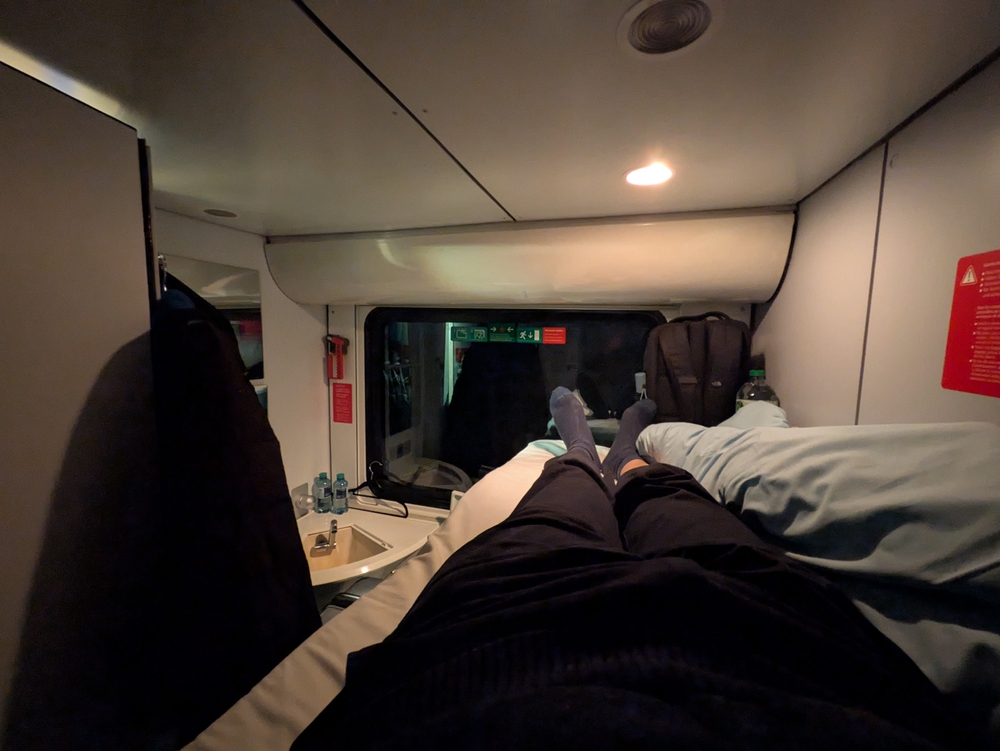
ÖBB Nightjet upgrades and expansions
Big headline: the newest-generation Nightjet sets are now out on the rails, and they’re the most comfortable sleepers Europe has seen in years. Think quieter cars, better mattresses, card‑access cabins, and modern power/USB at every berth. On select routes you’ll also find private single “mini cabins” for solo travelers and upgraded en‑suite sleeper rooms (shower/WC) in the deluxe category.
City pairs to bookmark right now (with reliable, city‑center timings):
- Amsterdam/Innsbruck–Vienna–Hamburg: the flagship corridor for the new stock; an after‑work departure lets you board in Amsterdam in the evening and roll into Vienna or Innsbruck after breakfast. Great for connecting Alpine trips without a flight.
- Berlin–Paris: relaunched as a Nightjet in late 2023 with multiple weekly runs and growing frequency; classic capital‑to‑capital convenience that beats a red‑eye.
- Brussels–Vienna/Innsbruck: your Benelux gateway to the Alps; easy hop from London via Eurostar to Brussels, then straight to bed.
- Zurich–Hamburg/Berlin/Amsterdam: Switzerland’s most useful overnights, ideal if you’re pairing lakes and mountains with a North Sea city break.
- Austria/Germany–Northern Italy (Venice, Verona, Milan, Rome, and select Ligurian coast dates): long‑time favorites, now with refreshed interiors on many runs. Board in Munich or Vienna after dinner, wake up minutes from an espresso.
Booking tip: check the “new Nightjet” icon or equipment notes on ÖBB’s site to see if your date has the latest rolling stock. Berth layouts and amenities are clearly shown before checkout.
“Falling asleep two blocks from a canal, waking up to the Alps — that’s not just transport, that’s a feeling.”
If you care about emissions as much as comfort, the European Environment Agency notes that rail travel can emit up to ~90% less CO₂ per passenger‑km than flying on comparable routes — a nice bonus while you sleep. Source: EEA transport and environment.
European Sleeper: Brussels–Amsterdam–Berlin now extended to Prague
The indie upstart with a cult following did the thing many of us hoped for: it pushed past Berlin all the way to Prague. Three nights a week (each direction), you can leave Brussels Midi after work, sweep through Amsterdam late evening, wake up in Berlin at commuter time, and continue to Prague by late morning — all city‑center to city‑center.
- Why it’s useful: the timings are “human.” No 4 a.m. alarms, no out‑of‑town airports. Perfect for long weekends or remote‑work Fridays.
- Comfort choices: seat, couchette (4–6 bunks), and traditional sleeper cabins. You can book a whole compartment if you want total privacy.
- Vibe: friendly staff, small‑operator charm, and a route map that finally links the Benelux, Netherlands, Germany, and Czechia overnight without a patchwork of changes.
Real‑world example: catch the early evening departure from Brussels or the late stop in Amsterdam, roll into Berlin around breakfast, and be on Charles Bridge by late morning. Check live dates and inventory on European Sleeper.
Scandinavia went quiet for a while — then came roaring back.
- SJ EuroNight: Stockholm–Hamburg (with Berlin on select days). A solid, year‑round backbone that leaves Stockholm Central in the evening and gets you to Hamburg around dawn. Some departures run through (or offer easy morning connections) to Berlin Hbf, putting the Swedish capital and the German capital back on a realistic sleeper timeline. Book direct at sj.se.
- Snälltåget: Stockholm/Malmö–Copenhagen–Hamburg–Berlin (seasonal). The summer classic returns most years from spring through early autumn, plus select holiday periods. It’s the fun, beachfront‑and‑city combo many travelers want: start in Sweden, roll over the Öresund to Denmark, wake up in Berlin. Details and calendars at snalltaget.se.
Both operators sell couchettes and sleepers; SJ also mixes in seated coaches on some dates. These trains sell out far ahead of school holidays — if you’re looking at July, think months, not weeks.
Summer specials and beach trains
Salt air by breakfast? Yes, please. When the mercury rises, sleeper maps tilt toward the Adriatic.
- RegioJet to Croatia’s coast: Prague/Brno–Rijeka and Split (seasonal). A fan favorite for a reason: affordable couchettes, private compartments for groups, and painless bike options on certain dates. Depart central Prague late afternoon or evening, step off in Dalmatia with the sun already out. Book direct at regiojet.com.
- Croatian Railways (HŽPP) Zagreb–Split sleeper: the dependable domestic night link, typically daily in summer with extra capacity on peak weekends and a trimmed schedule off‑season. Expect classic couchettes and sleepers; grab lower berths early. Timetables: hzpp.hr.
- Budapest–Split (summer): Hungarian Railways usually fields a seasonal EuroNight to Split with couchettes/sleepers, great if you’re pairing the Danube with islands. Check MÁV‑START as the summer calendars drop.
Pro move for beach trains: many services offer early‑bird promos and compartment buy‑outs for friends or families. If you see a “private” option at a decent price, grab it — those vanish first once school breaks begin.
One last thing before you plan your dream route: not every night train is expanding. Some beloved services are paused, cut back, or only appear on certain days. Want the short list of routes to avoid (for now), and the calendar traps that trip people up every summer? That’s next — ready to save yourself a headache?
Cuts, pauses, and seasonal gaps you should know about
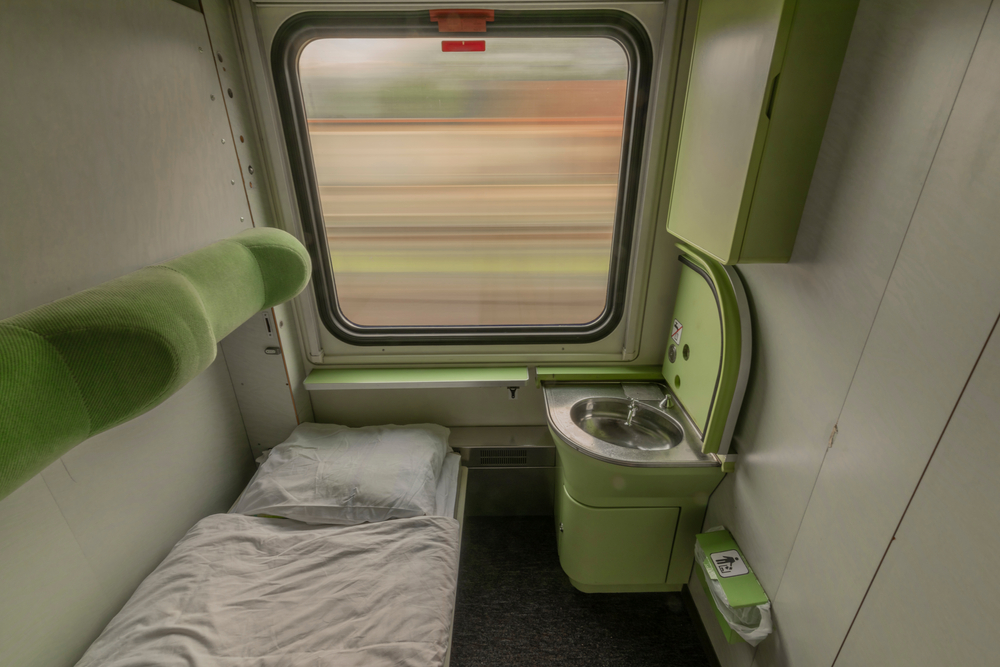
Night trains feel romantic until a route quietly vanishes from the timetable. Here’s the honest state of what’s been trimmed or put on ice—so you don’t plan around a ghost train.
“Timetables change; what matters is knowing which dreams are running this season—and which ones need a plan B.”
Spain’s long‑distance sleepers: the “Trenhotel” era is (mostly) over
Spain once had a web of overnight Trenhotel services linking Barcelona, Madrid and Galicia to Portugal and the north. Post‑2020, those classic beds are largely gone and haven’t returned as of the latest seasons.
- No direct beds to Portugal: The Madrid–Lisbon Lusitania and the Lisbon–Hendaye/Irún Sud Express remain suspended. Cross‑Iberian nights with a real bed aren’t an option right now.
- Domestic overnights are scarce: Renfe doesn’t currently run the old Trenhotel-branded sleepers. Expect fast daytime AVE/Alvia services instead (for example, Madrid–A Coruña in around 3–3.5 hours by day).
- What to do instead: If you want a “night” feel, look for late departures with morning arrivals on long Alvia or Intercity runs, or plan a smart stopover. For beds, your best bet is to connect to Italy, France, or Austria and pick up a sleeper there.
Why the retreat? Two things: high‑speed lines have slashed daytime journey times, eating the night train’s edge; and operators use the night hours for maintenance. Eurostat’s tourism data also shows heavy summer seasonality across Southern Europe, which pushes demand (and prices) into summer peaks and leaves winters thinner—tough for year‑round sleeper viability. See the EU’s write‑up on tourism seasonality for the big picture: Eurostat: Tourism seasonality.
France–Italy nights: Thello is gone—here’s how I replace it
Thello’s Paris–Venice night train ended in 2021 and hasn’t been revived. That single cut took out the most popular France–Italy sleeper. If you’re picturing a rolling hotel from the Seine to the Grand Canal, you now have to stitch it together.
- Daytime high‑speed is the default: Go Paris–Milan or Paris–Turin by TGV inOui or Trenitalia’s Frecciarossa, then continue onward by Italian day trains or pick up an Italian Intercity Notte for an overnight deeper into Italy (Milan–Bari, Milan–Sicily, etc.).
- Night-on-night workaround (indirect): Paris–Munich by evening TGV/ICE, then ÖBB Nightjet from Munich to Venice/Milan/La Spezia. It’s not as neat as Thello, but it gets you a bed and breakfast on arrival.
- Watch the fine print: You’ll be on separate tickets and operators. Build buffer time in Milan, Turin, or Munich in case of delays.
If you’re wondering why nobody has simply restarted Thello, the EU’s own action plan highlights the hurdles: cross‑border paths at night are limited, operators face different rules and costs, and infrastructure windows for maintenance usually sit right where sleepers would run. It’s all laid out in the Commission’s rail push here: EU: Long‑distance cross‑border passenger rail.
Routes paused by geopolitics (and demand swings)
Some headline night trains aren’t just “off for winter”; they’re suspended indefinitely due to events far bigger than a timetable change. A few you might see mentioned online—but shouldn’t plan around:
- Paris–Moscow (RZD): Suspended; no bookings. Don’t trust aggregator “ghost” results.
- Warsaw–Minsk–Moscow: Suspended. Border and sanction realities keep this off the map.
- Helsinki–St Petersburg (Allegro): The day service is suspended; there’s no related night train either. Check VR’s advisories: VR Finland.
- Kaliningrad transit trains via Lithuania: Passenger services remain affected; assume no through night option.
On the flip side, Ukraine’s domestic night trains are very much alive and widely used for essential travel, but cross‑border sleeper links are a patchwork of day trains and bus connections that change with the situation. Always verify with the operator’s current travel notices (PKP Intercity for Poland, Ukrzaliznytsia for Ukraine).
Seasonal service realities (and the “calendar traps” I still see travelers fall into)
Even healthy night routes often breathe in seasons. Many run denser in summer, thin out in shoulder months, or skip mid‑week for infrastructure works. Here’s how I keep myself from booking a bed on a night that simply doesn’t run:
- Always open the traffic‑days calendar: On operator sites, click the calendar icon and check the dots. A result for “every day” can still mask “runs only Fri–Sun.”
- Test multiple dates: Search the same route on a Tuesday and a Friday. If it disappears mid‑week, you’ve found a pattern.
- Watch seasonal notes: “From late June to early September” often applies to beach trains (think RegioJet to Croatia or Snälltåget to Berlin). Off‑season, they’re gone.
- Mind engineering windows: Railways fix tracks at night. In Germany and Austria especially, mid‑week works can cancel specific Nightjet runs or force bus replacements for a segment. Check service alerts before you book:
- Beware daylight saving weekends: Clock changes can shift arrival times or block certain nights altogether.
- Check the return, too: A Friday outbound may have no Saturday return. Book both ends before you lock hotels.
Why so much seasonality? Rail infrastructure managers front‑load maintenance into predictable night slots; operators then concentrate sleeper departures where demand actually peaks (summer, weekends, holidays). That aligns with EU data showing strong seasonal swings in leisure travel, especially to coastal hotspots (Eurostat again for the nerdy charts).
If your heart is set on a particular night, I get it. I’ve been there—refreshing a calendar and willing a dot to appear. The trick is pairing that desire with the right booking tactics so you grab a real bed on a night that actually runs. Want the exact steps I use (and the sites that show true sleeper inventory without the “seat‑only” surprise at checkout)?
How to book a bed, step by step (cash tickets)
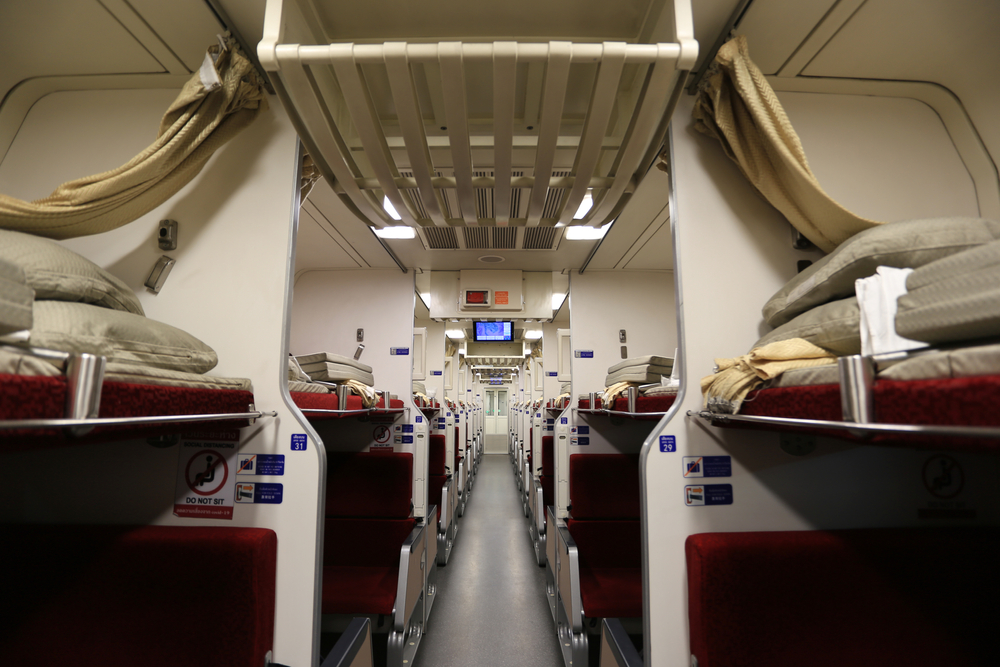
“Book the bed you want, not the bed you hope for.” Night trains reward a tiny bit of know‑how. Here’s exactly how I lock in a real bed—fast, at the best price, and without any 2 a.m. surprises.
Start with the operator
Operator sites usually show the true sleeper inventory first, let you choose the right cabin, and display the little extras (like women‑only or private compartments) that third‑party sites often hide.
- ÖBB Nightjet (Austria/Germany/Netherlands/Italy/France/Switzerland): book direct at oebb.at/nightjet. This is the most complete source for Nightjet sleepers and couchettes, including the newest cars.
- European Sleeper (Brussels–Amsterdam–Berlin–Prague): book at europeansleeper.eu for private and women‑only options that don’t always appear elsewhere.
- SJ EuroNight (Stockholm–Hamburg/Berlin): book at sj.se for real‑time couchette and sleeper availability and private compartments.
- Trenitalia Intercity Notte (Italy domestic overnights): book at trenitalia.com to see “Cuccette” (couchettes) and “Cabina Letto” (sleepers), including women‑only choices where offered.
- RegioJet (seasonal Croatia, Central Europe): book at shop.regiojet.com for couchettes, sleepers, and onboard extras (breakfast/coffee pre‑orders on some routes).
Real‑world example: Paris → Vienna. On many dates, third‑party sites showed only seats or a generic “night service,” while oebb.at offered 6‑berth and 4‑berth couchettes, plus 1/2/3‑bed sleepers (including new en‑suite “Deluxe” on select trains). Direct = the actual beds.
Use aggregators smartly
I use aggregators to compare and pay easily—then I sanity‑check on the operator.
- Trainline (thetrainline.com): great payment options and multi‑operator searches. Tip: apply the “Sleeper” filter and read the carriage type at checkout. If it only says “Seat,” back up.
- Rail Europe (raileurope.com): handy for cross‑border combos. If sleepers don’t appear, check the operator site before assuming it’s sold out.
- Omio (omio.com): useful for mixed modes and currencies, but night‑train categories can be simplified. Verify the final product type.
When do these help? If your card fails on an operator site, you need PayPal/Apple Pay/Google Pay, or you’re stitching a sleeper + morning connection. When do they hinder? When they show “seats from €X” but hide the actual couchette/sleeper inventory.
Pick the right category
“Bed” means different things. Choose carefully or you’ll end up in a seat all night.
- Seat: cheapest, upright or reclining. Fine for night owls; not a bed.
- Couchette 6‑berth: six bunks (three each side). Basic bedding and a door you can close. Best value beds for families and groups.
- Couchette 4‑berth: more space per person, same shared compartment feel. My go‑to value/comfort balance.
- Sleeper 3/2/1‑bed: proper beds in a quieter car. On many routes, 1‑bed is a private single, 2‑bed is perfect for couples/friends, and 3‑bed is shared. New Nightjet “Deluxe” adds en‑suite shower/WC on specific city pairs.
- Women‑only: offered on several operators (e.g., Nightjet, European Sleeper, Trenitalia couchettes). Look for “Ladies compartment” or a women icon during selection.
- Private options: pay to privatize a whole compartment—great with kids or gear. Look for “Private compartment,” “Compartment for exclusive use,” or “Private couchette.”
Operator naming cheat sheet you’ll see on screens: ÖBB = Sitzplatz (seat), Liegewagen 6/4 (couchette), Schlafwagen Standard/Deluxe (sleeper); Trenitalia = Cuccette 6/4, Cabina Letto (Comfort/Deluxe on some), “Area Donna” on select trains; SJ = Couchette 6/4, Sleeping compartment 1/2; European Sleeper = Couchette 6/5/4, Sleeper 1/2/3 with private options.
Secure the exact berth
Here’s how I lock in what I actually want—lower bunk, whole room, breakfast, the works.
- Lower vs upper bunk: on oebb.at, choose your sleeper/couchette, then open seating/berth preferences and tick “Lower berth” (it’s a preference, but often honored). On some sites, you’ll see “Lower/middle/upper” during selection; choose carefully.
- Whole compartment: select a product labeled “Private” or “Exclusive use.” On Nightjet this appears as “Private compartment in couchette (4/6)” or “Private sleeper.” On SJ and European Sleeper, look for “Private” toggles after picking the class.
- Women‑only: if you don’t see the option, try the operator site or change the passenger gender setting first; the toggle can appear only after you add a traveler.
- Breakfast: on Nightjet sleepers a light breakfast is typically included; couchettes get a simpler one on many routes. RegioJet and others let you add breakfast during checkout. If food matters, scan the inclusions line before you pay.
- Avoid “seat‑only” surprises: at checkout, confirm you see words like “couchette,” “sleeper,” “Schlafwagen,” “WL,” or bed icons. If it only says “Seat” or “2nd class,” you haven’t booked a bed.
- Ticket format: most operators send PDF/mobile tickets. Keep the QR handy and your ID accessible; staff will check it once and let you sleep.
Pro move: traveling as two but want maximum quiet? Compare a private 2‑bed sleeper vs a private 4‑berth couchette. On busy dates the private couchette can be cheaper—and you still get it all to yourselves.
Timing and pricing
Night‑train fares use airline‑style dynamic pricing. Beds are a limited pool—when they’re gone, they’re gone. From my trackable searches every season, booking earlier routinely saves 25–50% versus the last two weeks.
- When to book:
- ÖBB Nightjet: typically opens ~180 days out; new timetables or new trains can shift this.
- SJ EuroNight: commonly 90–180 days, sometimes released in blocks.
- Trenitalia Intercity Notte: usually 4–6 months, with occasional late releases.
- European Sleeper: often 2–4 months due to path approvals; sign up for their alerts.
- RegioJet (seasonal): summer sleepers can appear many months in advance; popular weekends sell fast.
- Price ladders: expect “Saver/Sparschiene” tiers (non‑refundable) and “Flex/Base” (changeable/refundable with fee). Private compartments may carry stricter rules—read the fare conditions line.
- Cheaper splits:
- Vienna → Florence: book Vienna → Bologna in a Nightjet bed, then a separate morning regionale Bologna → Florence from €9.90. Same arrival, lower total.
- Berlin → Brussels: Berlin → Amsterdam overnight on European Sleeper, then a separate daytime IC Amsterdam → Brussels. Often beats the through fare.
- Stockholm → Berlin: Stockholm → Hamburg on SJ EuroNight, then a quick ICE to Berlin. More times to choose, often cheaper.
- Peak traps: Fridays, Sundays, and summer holiday eves sell out first. If your date is fixed, grab the bed now and adjust later if your fare allows.
- Names and changes: many sleeper fares don’t allow name changes. Double‑check passenger names before paying.
One last emotional nudge: there’s a special hush when your cabin door clicks, the train hums to life, and your phone finally goes face‑down. Book the bed that lets you feel that hush.
Holding a Eurail or Interrail pass and wondering how to turn it into an actual bed—what fees, what quotas, and which sites accept passholder reservations? I’ve got you. Ready to make your pass work overnight for you?
Using Eurail/Interrail passes on night trains

Using a Eurail or Interrail Pass on a sleeper feels like unlocking a travel cheat code: you cover huge distances while you sleep and wake up right in the city center. There’s just one rule of the road I never break: book the actual bed, not just a seat.
“A bed on rails is the closest thing to teleportation we get.”
Reservations are mandatory for beds
A pass is your ticket, but on almost all European night trains you still need a paid reservation for any couchette or sleeper berth. Think of it as a supplement that buys the bed and the privacy.
- Typical passholder reservation fees (guide ranges, per person):
- ÖBB Nightjet (Austria–Germany–Italy–Netherlands–Switzerland–France):
Seat ~€14–€19, 6‑berth couchette ~€34–€39, 4‑berth couchette ~€44–€54,
Triple sleeper ~€54–€69, Double sleeper ~€74–€99, Single sleeper ~€94–€150+ (route/date dependent). - European Sleeper (Brussels/Amsterdam–Berlin–Prague):
Seat ~€14–€19, Couchette often €34–€49, Sleeper typically €69–€109+. - SJ EuroNight (Stockholm–Hamburg/Berlin):
Seat ~€5–€15 equivalent, Couchette/Sleeper commonly €25–€60+ (sold as SEK; varies by season). - Trenitalia Intercity Notte (domestic Italy):
Seat low, couchette/sleeper ~€20–€60 supplement depending on class and date.
- ÖBB Nightjet (Austria–Germany–Italy–Netherlands–Switzerland–France):
- Passholder quotas: some operators cap the number of pass seats/beds, especially in peak season. Nightjet generally releases broad inventory, but popular cabins still sell out fast. If you see “not available for rail passes” while cash fares remain, try a different date, cabin type, or booking channel (tips below).
- Seats at night: yes, you can reserve just a seat for a small fee with a pass. It’s the cheapest option, but it’s not a bed; expect a short night.
How to book with a pass (and what to do if the website says no)
I always try the operator first; they usually display the real sleeper inventory and the correct pass supplements. Here’s the quickest path on the big players right now:
- ÖBB Nightjet:
- Go to oebb.at or nightjet.com.
- Search your route/date, then under Discounts add “Interrail/Eurail Global Pass.”
- Pick the exact category (seat, couchette 6/4, sleeper 3/2/1). Look for phrases like “Reservation for Pass” or “supplement” at checkout.
- If a cabin shows sold out, try the other berth layout, nearby dates, or split your trip (e.g., Munich–Florence instead of Stuttgart–Florence).
- European Sleeper:
- Book direct at europeansleeper.eu/book.
- Toggle “I have an Interrail/Eurail Pass” to see passholder supplements for seats, couchettes, and sleepers.
- SJ EuroNight (Sweden–Germany):
- Use sj.se and choose “Seat reservation only” with the Interrail/Eurail option when offered.
- For Berlin legs, check if your specific date is Berlin or Hamburg terminus; availability can differ.
- Trenitalia Intercity Notte (Italy):
- Try trenitalia.com and look for the Global Pass discount. If the site can’t price your berth, use a station ticket office in Italy or a partner counter (DB/ÖBB/SBB) — they can usually issue the pass supplement for couchettes/sleepers.
Backup channels if the operator site won’t play ball:
- Interrail/Eurail Reservation Service in the app or web portal (booking fee applies; some night trains still require paper coupons that must be collected or mailed).
- Major station counters: DB Reisezentrum (Germany), ÖBB (Austria), SBB (Switzerland), SJ (Sweden). They’re gold when online systems disagree.
Not every night operator accepts passes: for example, RegioJet night services (to Croatia and beyond) typically aren’t included in Eurail/Interrail. Always check pass validity for a given company before you plan a sleeper around it.
Travel‑day math: the old “after 7 p.m.” rule vs the app today
If you used paper passes years ago, you might remember the “after 7 p.m.” trick (start after 19:00 and only burn the next day). That’s history. With the mobile pass:
- You use one travel day: the day you board the overnight train.
- No free ride into tomorrow: if you change trains after midnight, you’ll need a second travel day for that post‑midnight train.
Real‑world examples:
- Vienna 22:10 → Venice 07:30 (direct Nightjet): you only activate the day you depart Vienna. You can step off in Venice and stroll to coffee without using another day — as long as you don’t board another train.
- Prague 18:00 → Berlin 22:00 → Hamburg 01:30 (connection after midnight): the Prague–Berlin leg uses one travel day; the 01:30 connection eats another. If you want to avoid that, find a direct sleeper or a connection that departs before midnight and arrives after.
How I log it in the Rail Planner app: I add the exact overnight train to my trip, activate that single travel day just before boarding, and I do not add any post‑midnight connections unless I’m okay spending a second day. Double‑check the timestamp on your QR—staff will.
Money‑saving combos that actually work
Sometimes the pass + sleeper supplement is a steal; sometimes a straight ticket is simpler and cheaper. I run both scenarios before I book. A few patterns I see over and over:
- Peak weekends, popular sleepers: the passholder supplement for a couchette can undercut cash fares by a lot.Example: on a busy summer Friday, I’ve paid ~€39 with a pass for a Nightjet 6‑berth couchette that was €89–€119 as a cash “Sparschiene” ticket by the time I looked.
- Private sleepers for couples/solo: cash promo fares can occasionally beat the pass + high single supplement.Example: a Paris–Vienna double sleeper on sale at ~€179 per person vs. a pass supplement near €99 each — close call. If your pass day is valuable (limited days left), the cash fare wins. If your pass day is unlimited or already planned, the supplement might be smarter.
- Long daytime + overnight split: use the pass for an all‑day scenic run (no reservations or cheap ones), then pay cash for a short sleeper hop where pass supplements are unusually high. Great in Italy where Intercity Notte supplements can approach the price of a sale fare.
- When flying is tempting: if the sleeper cash fare is high and you’d use up a precious pass day plus €80–€120 in supplements, price a morning high‑speed train + cheap hotel. I love sleepers, but I’m not sentimental with my wallet.
My quick checklist before I commit:
- Price the same cabin both ways: pass + supplement vs cash fare.
- Count how many travel days you’d burn (any post‑midnight connections?).
- Check refund rules: pass supplements on sleepers are often non‑refundable close to departure.
- If you’re set on a lower berth or private cabin, book early — 2–6 months out is the sweet spot on popular routes.
You’ve got the pass, you know the rules, and you can see the savings. Now comes the fun part: which bed do you actually want for the night? Are you a women‑only couchette person, a classic single sleeper, or does a private family compartment fit best? Let’s pick the perfect cabin next.
Choose the right cabin for your trip
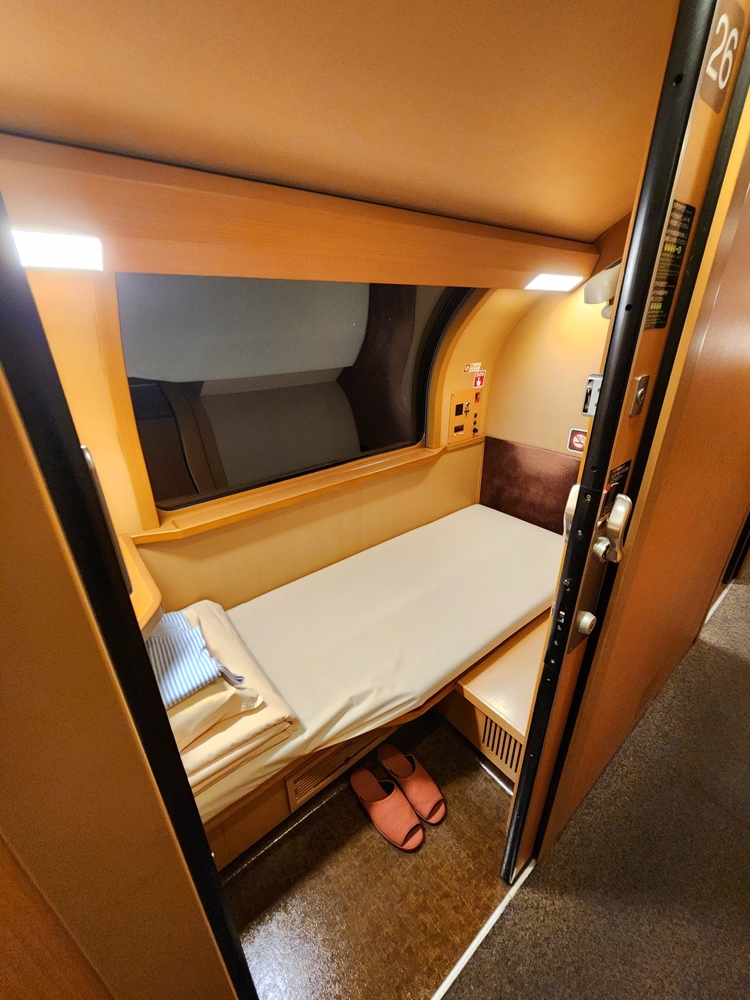
I always say the bed you book shapes the night you have. Pick well, and your sleeper isn’t just transport—it’s a tiny moving hotel room where you feel safe, comfy, and excited to wake up somewhere new.
“You don’t just cross a border on a night train—you cross into a better morning.”
Solo traveler picks: women‑only couchettes, single sleepers, and going private
Traveling alone changes what “best” looks like. Here’s how I choose, with real options that actually exist on current routes:
- Women‑only couchettes: A simple, proven way to feel at ease in a shared space. You get 4–6 bunks with linens and a door that locks. Examples:
- ÖBB Nightjet’s Ladies’ compartments on popular routes like Vienna–Amsterdam and Zurich–Berlin.
- European Sleeper’s women‑only option on its Brussels/Amsterdam–Berlin–Prague line: see comfort types.
- Single sleeper cabins: The most restful choice if you’re a light sleeper or on a work trip. Classic “single” rooms exist on many sleepers (some with en‑suite on select Nightjet trains). Worth it if you value a door to yourself and a pre‑set breakfast tray.
- “Mini cabins”/pods on new Nightjet stock: A clever budget‑friendly private option rolling out on select routes. You get your own lockable pod with reading light and storage. Check availability on routes listed at nightjet.com.
- Privatize a couchette: If you want solitude without sleeper‑level prices, book a full 4‑ or 6‑berth couchette for “exclusive use.” Look for wording like private compartment or exclusive use (ÖBB, SJ, and European Sleeper all offer this toggle).
- Lower berth tip: If you can choose a specific bunk, pick a lower. You step in/out easily at night and feel a touch less sway. Upper bunks are fine, but if you’re new to sleepers, a lower just feels calmer.
Safety and sleep are emotional—so choose what reduces friction for you. A 2016 sleep environment study from European transport researchers noted that predictability and personal control (door/curtain, lighting, temperature) correlate with better perceived rest. On trains, a private room or women‑only compartment nudges those variables in your favor.
Couples and friends: 2‑berth sleepers, adjoining cabins, and smarter bunk choices
Two people? You’re spoiled for good options.
- 2‑berth sleeper (“Double” or “Twin”): The sweet spot for comfort and value. You’ll typically get beds made up with real sheets, a washbasin (or en‑suite on specific trains), and breakfast included. In practice:
- ÖBB Nightjet “Deluxe” sleepers include private shower/WC on select routes; some new sets have modern bathrooms and USB power.
- SJ EuroNight offers twin sleepers on Stockholm–Hamburg/Berlin runs: SJ sleeping cars.
- Adjoining/connecting cabins: On newer Nightjet trains, two double rooms can connect to create a private family suite. It’s perfect for two friends who want separate rooms with a shared door—or a couple who want extra space for gear.
- Why I pay extra for a lower berth: Many systems price a cabin as a whole, but when there’s a choice, the lower fills first for a reason. It’s easier at 3 a.m. after a border check, and you can stash heavy bags under the bed without ladder acrobatics.
- Three friends? If there’s a 3‑bed sleeper, book it. If not, a private 4‑berth couchette gives you space for snacks and backpacks while staying cheaper than two separate sleepers.
Small comfort upgrades matter as a pair: a door you lock, two flat beds, and the ability to sit side‑by‑side with coffee in the morning. That’s the difference between “we survived” and “we’d do that again tomorrow.”
Families: 4‑ or 6‑berth couchettes vs private family cabins; stroller space, bedtime, breakfast
Night trains shine for families because you turn bedtime into travel time. A few practical wins I’ve learned:
- 4‑berth couchette = best control + price: For two adults + two kids, a private 4‑berth couchette gives everyone a bunk, a door you control, and enough floor to manage pajamas and teeth. European Sleeper and Nightjet make this very straightforward at checkout.
- 6‑berth couchette = value for bigger crews: Works for 5–6 if the kids are happy to scramble into uppers. Ask the attendant for a second pillow to wedge smaller sleepers safely.
- Dedicated family rooms: Some operators label certain compartments as “family.” On new Nightjet sets, two connecting doubles can form a roomy family suite; RegioJet often markets family‑friendly compartments on its seasonal trains to Croatia.
- Strollers:
- Bring a foldable. Slide it under a lower bunk or park it in the vestibule with a soft strap (always ask the attendant first).
- Compact travel cots don’t fit in standard sleepers; use the lower berth instead and build a pillow “rail.”
- Bedtime routine that works:
- Assign bunks before boarding and stick to it.
- A tiny red nightlight or phone on “low warm” saves you from flicking on the ceiling light.
- Pack PJs and toothbrushes in a single quick‑grab pouch; everything else can wait till morning.
- Breakfast reality check:
- On ÖBB Nightjet, sleepers include breakfast; couchettes usually include a light one. Staff take your tea/coffee choices the night before.
- Trenitalia Intercity Notte doesn’t include breakfast—bring a croissant and fruit for early risers: trenitalia.com.
One more sanity saver: if your child is a restless mover, book them a lower berth and use your backpack as a soft bed‑end bumper. Simple, effective.
Accessibility, pets, and bikes
- Accessible cabins:
- New‑generation Nightjet trains include an accessible sleeper with adjacent accessible WC; book through the assistance line to coordinate boarding help: ÖBB barrier‑free travel.
- SJ’s night trains have accessible options and designated pet/no‑pet cars; details here: SJ accessibility.
Tip: Ask for a compartment near the staff room if you want quicker assistance during night checks or early arrivals.
- Pets on night trains:
- Common rule across Europe: small pets in carriers are often allowed; larger dogs usually need a ticket, leash, muzzle, and—crucially—a private compartment.
- Trenitalia spells it out for sleepers/couchettes: exclusive use required for larger dogs; see Trenitalia pet policy.
- European Sleeper allows pets in private compartments with a supplement: check FAQs.
Bring a blanket so claws don’t touch upholstery—staff will thank you and you’ll avoid cleaning fees.
- Bikes: limited spots, always reserve:
- Night trains carry only a handful of bikes per departure and they sell out fast.
- ÖBB Nightjet: see bike rules and booking steps at ÖBB bicycle on trains.
- European Sleeper has a clear bike page with numbers by train: Bicycles on European Sleeper.
Pack pedals with a hex key and bring a soft cover; some conductors insist on it even with a reservation.
One last emotional truth from years of doing this: it’s not just about price per berth—it’s about how you want your night to feel. Privacy, predictability, and the right little comforts make the difference between tossing and actually sleeping. Next up, want my short list of what to pack, what to eat, and how border checks really work at 3 a.m. without wrecking your REM? Let’s make the onboard part silky smooth.
Onboard tips that make a night train feel easy

Pack smart
I keep a tiny “sleep kit” ready for every night train. It weighs nothing and makes all the difference:
- Eye mask + earplugs: Cabins dim, but corridors don’t. Curves squeal. Studies consistently show eye masks and earplugs help people fall asleep faster in noisy, unfamiliar places—trains are exactly that.
- Soft cable lock: Loop it through your bag handle and the luggage rack/ladder. It won’t stop a pro, but it prevents opportunistic grabs during station stops.
- Comfy layers: A light merino layer doubles as pajamas and temperature control. HVAC can run hot or cool depending on the car.
- Slip-on shoes or grippy socks: You’ll thank yourself at 3 a.m. on a wobbling corridor.
- Power bank + short cable: Sockets are usually there, but not always in shared couchettes. A power bank saves the day.
- Minimal toiletries: Toothbrush, paste, face wipes, tiny moisturizer, deodorant. A small quick-dry towel if you’re in a car with showers.
- Valuables pouch: Keep passport, phone, wallet on you or under your pillow. I use a thin crossbody that’s comfy to sleep with.
- Tracking tag (optional): An AirTag/Tile in your big bag adds peace of mind.
Pro tip: most cabins have a lock from the inside; use it. If you’re sharing with strangers, stash your daypack at the head of your bed and your larger bag under the lower bunk or on the rack.
Food and drink
Plan as if there’s no dining car, then treat any onboard service as a bonus. It varies by route and season:
- ÖBB Nightjet: Sleeper tickets include a light breakfast (you tick your choices on a card the night before). Couchettes often include a simpler breakfast; seats don’t.
- European Sleeper: Staff sell coffee, tea, soft drinks, beer, and snacks. It’s not a full kitchen, so bring a picnic if you want a proper meal.
- SJ EuroNight and Snälltåget: Offer snacks and drinks; Snälltåget sometimes runs a cozy dining car (“Krogen”). Check your specific train when booking.
- RegioJet: Budget-friendly snacks and drinks at-seat are common, but stock varies.
What I bring:
- Water: 1–1.5 liters per person. You’ll want it after brushing your teeth or if the car runs warm.
- “No-smell” dinner: Think couscous, simple sandwiches, salads. Strong aromas travel fast in tight spaces.
- Breakfast backup: A banana, yogurt pouch, or granola bar in case you wake up ravenous before the cart rolls by.
Sleep-friendly habits help, too. Cut caffeine 6–8 hours before boarding, keep alcohol light (it fragments sleep), and switch your phone to warm screen mode after boarding. You’ll fall asleep faster and wake up less groggy.
Border checks and arrivals
Crossing borders at night isn’t a big drama, but a little prep keeps it quiet:
- Schengen routes: Most sleeper corridors are fully inside Schengen (Austria–Germany–Netherlands–Belgium–France–Italy–Switzerland–Czechia, etc.). Expect ticket checks, not passport checks. Spot checks can still happen—keep your passport within reach.
- Non‑Schengen/External borders: On routes toward the Balkans or Turkey, officials may board around the border. Keep lights low, have documents handy, and you’ll be back asleep quickly. Sometimes staff collect passports in advance and return them in the morning—normal practice on certain routes.
- Wake‑up calls: Sleeper attendants will knock if you ask. On some trains (e.g., Nightjet), it’s standard for breakfast delivery. I still set a phone alarm 20 minutes before my stop in case the train makes up time and arrives early.
- Morning connections: Overnight trains can be delayed by engineering work or freight priority. I plan a 30–60 minute buffer for any connection I must make. If there’s a once‑daily onward train or a flight, I give myself even more cushion or swap to a later departure.
Platform tip: arrivals can be short stops. Have shoes on, bag zipped, and cabin cleared a few minutes before your station so you can step off without the scramble.
Handy onboard habits that actually work
- Board early, set up once: Make your bed, lay out sleep kit, pick your morning clothes, fill water. You’ll settle in faster and avoid rummaging after lights out.
- Quiet hours: Treat the corridor like a hotel hallway. Headphones on, doors closed softly. If you’re in a shared cabin, agree on lights-out and window position when you meet.
- Temperature control: Use layers first. If it’s still off, ask the attendant for an extra blanket or a quick tweak—sometimes individual vents can be adjusted.
- Shunting awareness: Some trains add/split cars late at night. You’ll feel jolts during these maneuvers. Earplugs in before that window and you’ll likely sleep through it.
- Bathroom etiquette: Bring your toiletries in a small pouch so you can zip in/out. Keep it friendly for everyone waiting.
Real examples from recent trips
- Nightjet Vienna–Paris: I used the breakfast card to request coffee and muesli 30 minutes before arrival. Attendant knocked at 7:00, coffee appeared, and I walked off the train already fed.
- European Sleeper Berlin–Brussels: I brought a simple picnic, then grabbed hot coffee from the staff cart in the morning. Border felt invisible; tickets checked once, passports stayed in my pouch.
- Snälltåget Stockholm–Berlin (summer): The dining car was a social magnet. I still packed snacks in case it filled up—and it did. Earplugs handled the party mood near the bar car.
Safety and peace of mind
- Inside lock + chain: Engage both in private cabins; in shared spaces, use the inside lock and keep valuables on you.
- Common-sense storage: Heavy bags under the lower bunk; smaller bag up high or by your pillow.
- Staff presence: Attendants patrol at intervals and are easy to reach. If something feels off, tell them right away.
Most people sleep fine after the first 30–40 minutes when the rhythm settles. The train’s motion is part cradle, part white noise—that’s half the charm.
One last thing before we roll into the morning: want quick answers on which trains have real beds and how to make sure you get one every time? I’m covering that next—what’s the one booking move most first-timers miss?
Quick answers and my final word
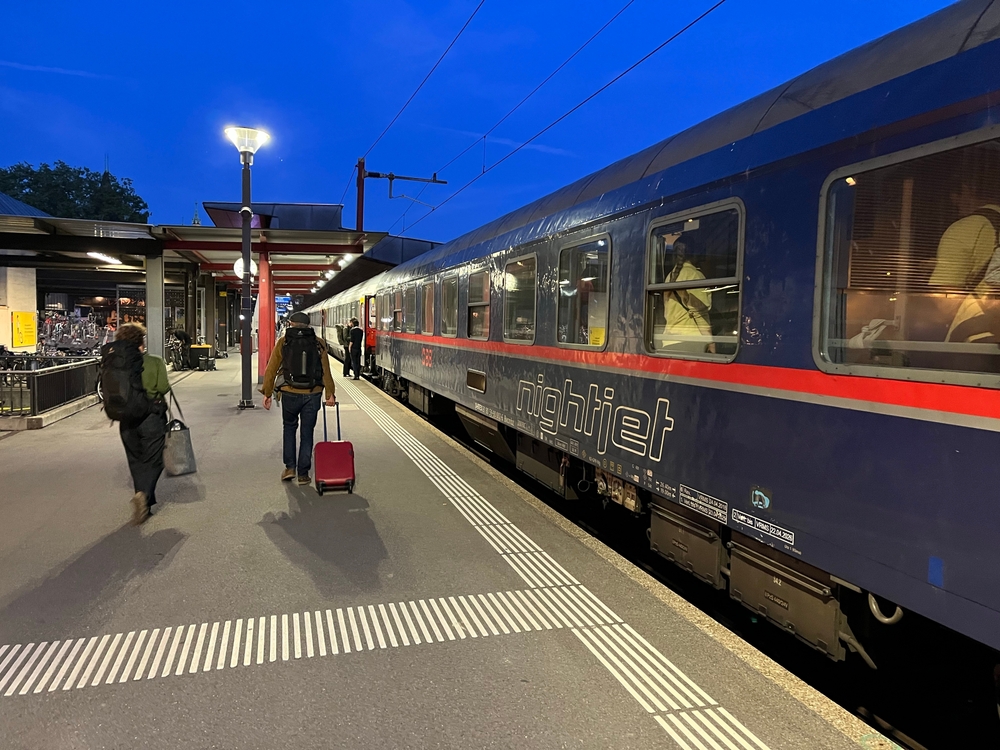
What trains have beds on them?
You’ve got plenty of true sleeper choices across Europe. These are the big names I book and recommend, with quick examples so you know what to look for:
- ÖBB Nightjet — network across Austria, Germany, Netherlands, Switzerland, Italy, and France. Think Amsterdam–Zurich, Vienna–Venice, Munich–Rome. Proper sleepers, couchettes, and on newer sets, en‑suite options.
- European Sleeper — Brussels/Amsterdam–Berlin–Prague. Modernized couchettes and sleeper cabins with city‑center timings that actually work.
- SJ EuroNight — Stockholm–Hamburg/Berlin. Scandinavia to Germany with couchettes and sleepers, a sweet spot for skipping airports.
- Snälltåget (seasonal)
- Trenitalia Intercity Notte — domestic Italian overnights like Milan–Naples, Rome–Sicily (yes, the train goes on the ferry). Mix of couchettes and sleepers.
- RegioJet — summer sleepers to Croatia’s coast from Prague/Brno/Bratislava; couchettes and sleepers at sharp prices.
- Caledonian Sleeper — London to Scotland (Edinburgh, Glasgow, Inverness, Fort William). Private rooms, some en‑suite.
- Night Riviera — London–Penzance. Compact cabins, friendly staff, Cornwall by sunrise.
Outside Europe, sleepers exist too (hello, Amtrak Roomettes), but if you’re planning Europe, start with the list above.
Do you get a bed on the sleeper train?
Yes — if you book a couchette or sleeper. A standard “seat” is just that: a seat. When you’re on the booking page, make sure you actively select one of these:
- Couchette — a bunk in a shared compartment (usually 4 or 6). Budget‑friendly, bedding included.
- Sleeper — a proper bed in a 1/2/3‑bed cabin, often with a washbasin and, on select routes, an en‑suite shower/WC.
- Private options — pay to solely occupy a whole compartment. Great for couples, families, or anyone who wants a door that locks.
Quick check: your confirmation should explicitly say “couchette” or “sleeper/berth.” If it only says “seat reservation,” you haven’t booked a bed.
Do overnight trains in Europe have beds?
They do — and the range is wider than most people expect:
- Shared couchettes in 4‑ or 6‑berth layouts (European Sleeper, SJ, Snälltåget, RegioJet, Trenitalia ICN).
- Classic sleepers with 1/2/3 beds per cabin (Nightjet, Trenitalia ICN, Caledonian Sleeper).
- En‑suite cabins on select services (e.g., Nightjet’s newest carriages on key routes; Caledonian’s Club rooms).
Why I love them: they trade airport chaos for a calm check‑in, a made bed, and coffee at dawn as the city rolls past the window. The bonus is environmental. Independent analyses consistently show rail has a far smaller carbon footprint than flying for the same distance:
Our World in Data estimates average CO₂ emissions around ~41 g per passenger‑km for rail vs ~156–255 g for short‑haul flights (economy), depending on assumptions and load factors. That’s roughly 4–6x lower for trains on comparable links.
Final take
Night trains are back — and the good ones sell fast. Pick the right category (couchette or sleeper, not a seat), book on the operator’s site for the real inventory, and set a reminder a few months out so you snag the exact cabin you want. Do that, and you’ll close your door, slide under fresh sheets, and wake up in a new city with a suitcase full of time you didn’t spend at an airport. That’s the magic worth planning for.